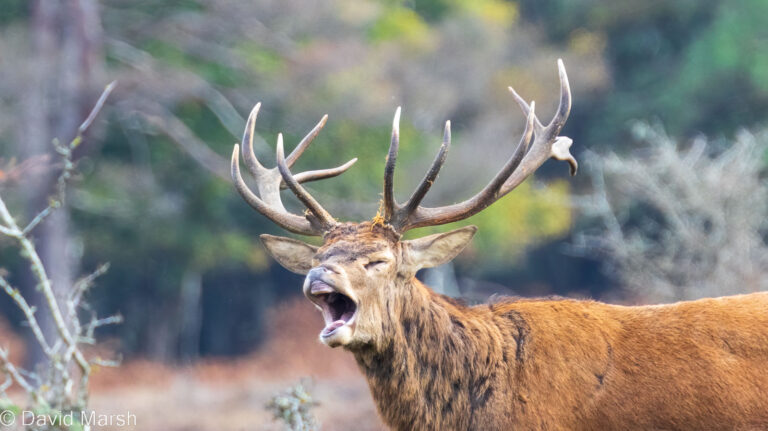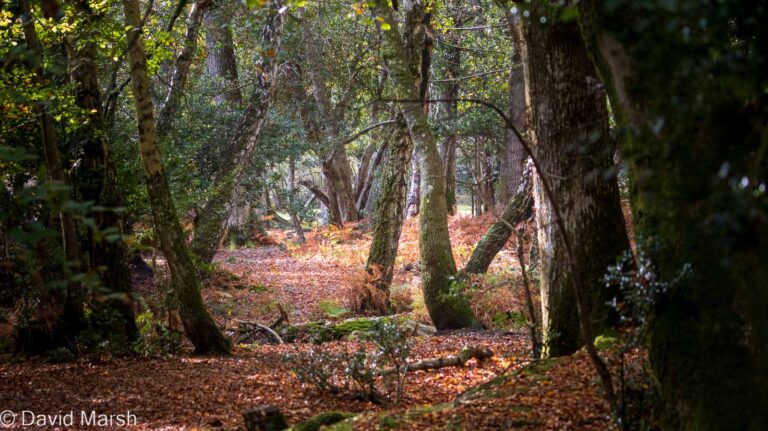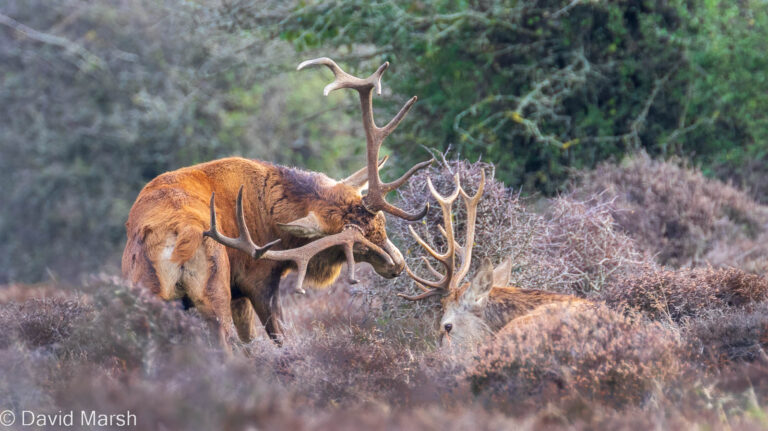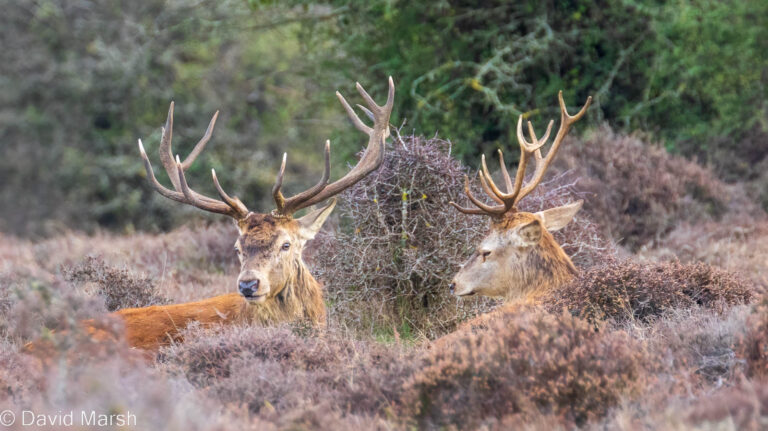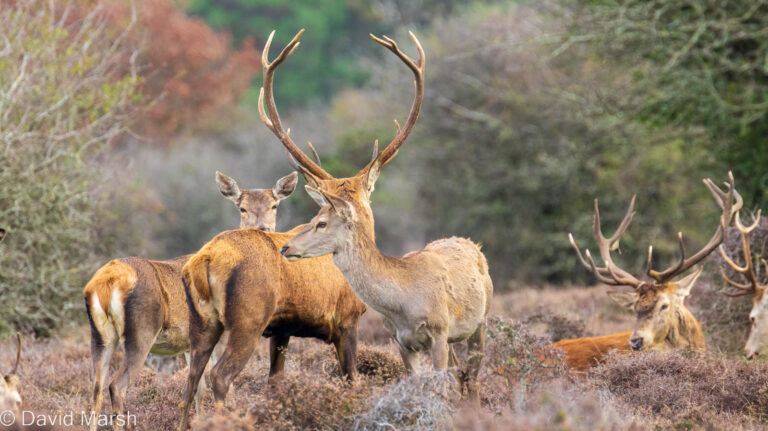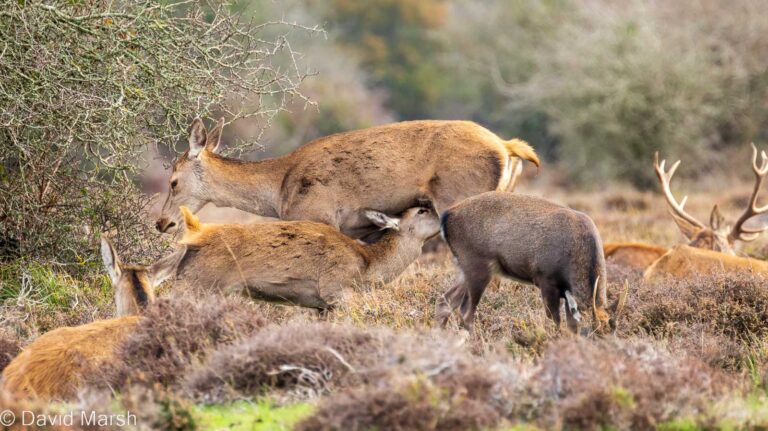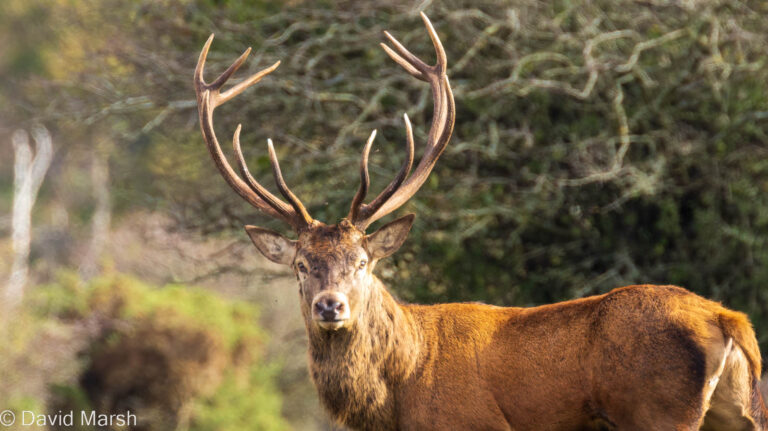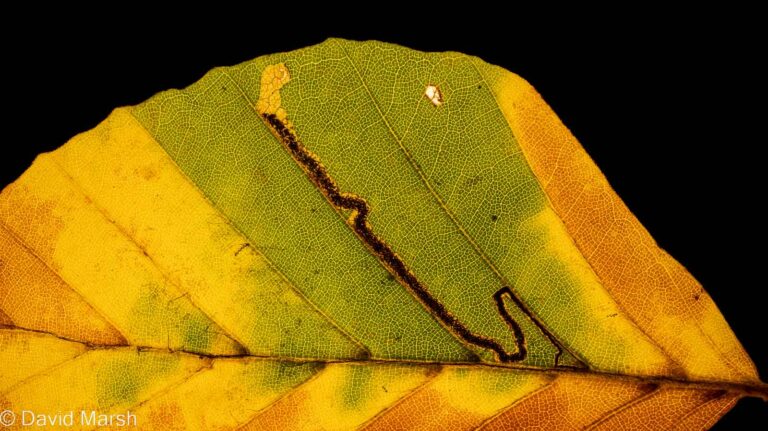Photos of red deer, a dung beetle, fungi and leaf miners from a day out with Wildlife Worldwide
Cloudy with an occasional burst of sunlight in the morning. Wet in the afternoon.
The herd of maybe 50 animals was in open heath, and mainly sedentary, standing to check out us and other people trying to get a bit close. As they relaxed, we moved forward slightly, but they were still a long way away. No backlit portraits, or action shots; just a few cool deer hanging out in the autumn.
Photo bombed by a pony, and gatecrashed by a sika deer (the darker body at the end of the horse’s nose.
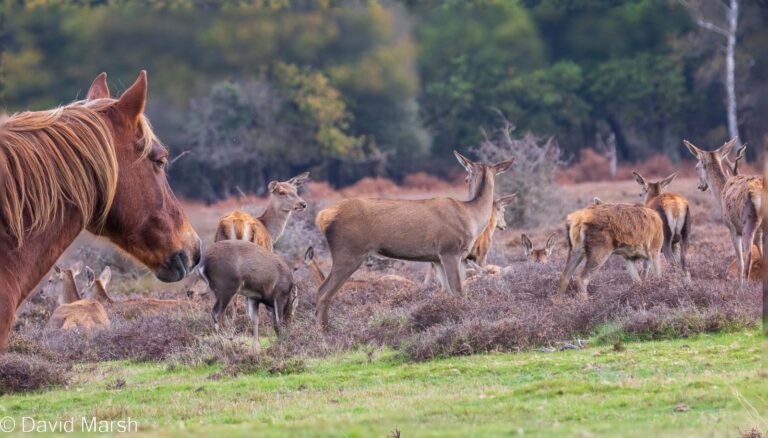
Almost an action shot; moving about in the rain

More deer photos in the slideshow below, and there’s another red deer stag photo on the Knepp page.
for a Dor Beetle, Anoplotrupes stercorosus, a species of earth-boring dung beetle

And some great fungi.
Closest ID for this: Southern bracket (Ganoderma australe)

Tremella mesenterica (common names include yellow brain, golden jelly fungus, yellow trembler, and witches’ butter). Or maybe Dacrymyces palmatus (orange jelly)

Probably a Honey Fungus (armillaria mellea)

Fairly safe with this ID. Macrolepiota procera, the parasol mushroom,

But the highlight of the woods, if not of the whole day, was finding beech leaves hosting leaf mining larvae, as shown last Friday on Autumnwatch (@38 minutes) by Lucy Lapwing. So exciting to find real examples of what we had just seen on TV, and just an amazing bit of the natural world.
These trails are the poo left by TINY caterpillars living *inside* leaves. Inside the caterpillar lives a bacteria. The bacteria causes the caterpillar to emit a hormone in its spit, which keeps the leaf green. It stops autumn in its tracks until it emerges.
The caterpiller is Stigmella tityrella. This species feeds on beech (Fagus sylvatica). Widespread and fairly common over much of the British Isles, the moths fly in April and May, and again in July and August
The bacteria are called Wolbachia. It triggers the caterpillar to produce the hormone directly called cytokinin. Cytokinin->chlorophyll synthesis->photosynthesis, allowing that part of the leave to stay green and providing food for the caterpillar.
(Thanks to Lucy, and her twitter followers for these details)
Select any thumbnail below for a full screen slideshow





